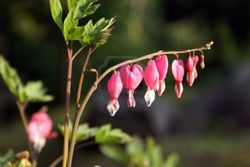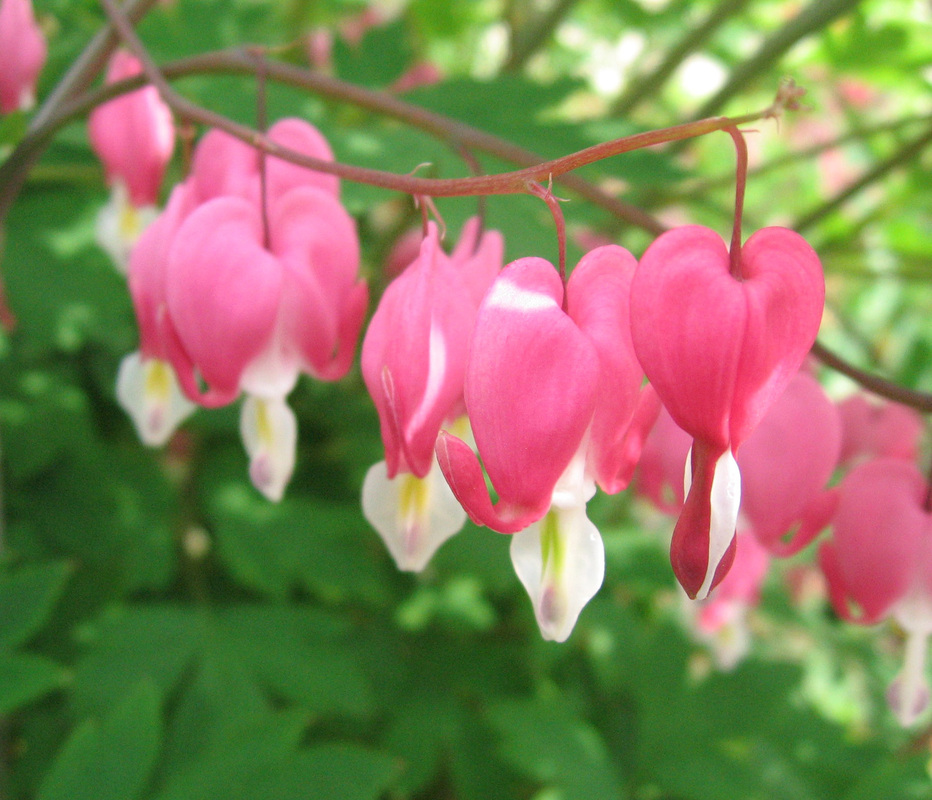Compassion - The Bleeding Heart
|
Bleeding Heart
Small pink hearts Arch gracefully in filtered shadows Enduring winter snows To beckon the arrival of Spring 
In the shady Northwest woodlands the delicate flowers of the hardy perennial known as Bleeding Hearts can thrive. Their heart shaped blossoms give rise to their names as well as some folklore of how the flower came to be. In legend a Prince fell in love with a Princess who continually spurned him. He offered her first two pink rabbits, but she rejected these. He followed this with two dangling earrings that she also rebuffed. Heartbroken, he drove a dagger through his heart. However, the reluctant Princess realized that she loved the Prince after all and so she also died, causing the heart to bleed forevermore.
Bleeding hearts enjoy moist, shade to part shade areas with rich humus soils. Well adapted to the Northwest, they are champions of soft color in the garden. Their pink to lavender blossoms show from April into summer. Drought or extreme heat can shorten their blooming time. Non-native varieties have a shorter bloom time. Their flowers are attractive to bees, butterflies and hummingbirds. The leaves are deeply cut and look like a mantle of lace. They clump together and form mounds that can get quite tall. In the garden, they may need division every three to four years. Some parts of the bleeding heart are mildly toxic. However, what it may add to the landscape makes the risk worthwhile! “If music be the food of love, play on, Give me excess of it; that surfeiting, The appetite may sicken, and so die.” ― William Shakespeare, Twelfth Night |
CompassionObservations along the path lead to the value of compassion, teaching us to listen first with our hearts and then with our heads. Understanding comes more readily as we hear the stories that arise from each unique plant or animal we encounter. This same enfolding is what we can carry to our families and communities.
|

